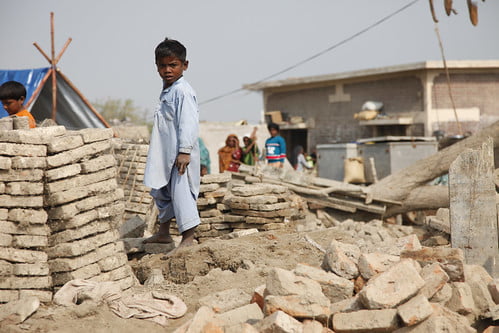Sarah Chapman reflects on conversations in Cochrane and beyond about choosing images to illustrate heath topics. Since writing this blog, in October 2020, Cochrane UK, with the help of a global advisory group and other colleagues, has produced for Cochrane Choosing images for sharing evidence: a guide, which is free for anyone to access and use.
Page updated 13 October 202 and last checked 21 April 2023
Take-home points
- Using images to illustrate health information has pitfalls but also opportunities.
- Avoid using images that may undermine the accompanying text.
- Thoughtful image use can help challenge assumptions and change the conversation about health conditions.
Lightbulb moment? Cue the clichéd stock image. But maybe I could be excused for once, as I had one of these when a colleague from Cochrane Tobacco Addiction sent me a blog about quitting smoking, with this request for a choice of image to go with it: “Please nothing that depicts a cigarette or someone smoking, as these images can act as triggers”. You could have knocked me down with a filter paper.
We choose images for our blogs and other social media content with great care. We know that they can inform or misinform, attract or repel, have power and influence that is distinct from the words they accompany. It’s an ongoing challenge to find images to accompany our health blogs and other resources that are accurate, authentic, respectful and diverse, and that meet Cochrane’s brand guidelines.


Despite our efforts to take great care with the images we choose, we’d been missing something about tobacco. Common sense tells us to avoid images that glamourize smoking; we are familiar with issues around tobacco advertising and plain packaging for tobacco products and indeed the Cochrane evidenceCochrane Reviews are systematic reviews. In systematic reviews we search for and summarize studies that answer a specific research question (e.g. is paracetamol effective and safe for treating back pain?). The studies are identified, assessed, and summarized by using a systematic and predefined approach. They inform recommendations for healthcare and research. on that. But we had not considered the potential for images of tobacco products or related items to trigger smokers or ex-smokers to want to smoke. We didn’t have to look far to learn that there has been plenty of research into the neurophysiology of this. I wondered what people on Twitter might have to say about triggering images, not just about smoking, and the responses boil down to “it’s complicated!”. If we’ve been getting this wrong, it seems we are in good company. Tobacco-related images are everywhere in resources encouraging people to quit. Indeed, the blog in question was written to coincide with the World Health Organization’s World No Tobacco Day and there, on the campaign’s homepage, was an image of someone snapping a cigarette in half.

We have a responsibility to ensure the images we use don’t undermine the information alongside it, either by acting as triggers or through giving the wrong message. Some similar thinking is going on at The Guardian around the images they use to illustrate stories about the global impact of climate change. Picture editor, Fiona Shields, writes that research has shown using pictures of people and real-life situations resulting from climate change increases the relatability of the accompanying stories. But the emotional tone has to be right and the image has to confirm what the text is saying. A photo of people enjoying themselves in the snow or sun with a story about unseasonal weather resulting from climate change gives a muddled message.

I think we should strive to go beyond ensuring consistency between text and picture and avoiding images that act as triggers, though these things are important. There is scope for us to use images to positively influence attitudes and behaviour. Shields writes of a need to move beyond the go-to images of polar bears on melting ice floes, of floods and heatwaves, to “new imagery for new narratives”.
One area of health where we can see this happening is in mental health. Our colleagues at Cochrane Common Mental Disorders are really aware of the power of the picture and are working hard to use imagery well. Jess Hendon, their Managing Editor, explains:
“Visuals are so important when trying to promote the findings of our Cochrane ReviewsCochrane Reviews are systematic reviews. In systematic reviews we search for and summarize studies that answer a specific research question (e.g. is paracetamol effective and safe for treating back pain?). The studies are identified, assessed, and summarized by using a systematic and predefined approach. They inform recommendations for healthcare and research., so we spend a lot of time thinking about the images we use. As much as possible we seek advice and input from our partner charities and people with lived experience. But we do find images that work well and feel representative of one person’s lived experience don’t always for another – so it can be really tricky.
Mental health problems are very common, no one looks the same so mental health problems don’t have a ‘certain look’. We are currently trying to use more positive everyday images of people – thinking in terms of prevention and recovery rather than crisis and distress. We welcome discussion and blogs like this one, we are not sure we are getting it right but we are trying. We find drawings and more abstract visual representations can sometimes be a helpful and distinctive alternative to photos too.”

We’ve all seen the ‘headclutcher’ photos of someone head in hands, accompanying a mental health story. Twitter user and blogger @Sectioned_ has pointed out that “this perpetuates an image in the public mind of what mental distress looks like. And, if you don’t meet that stereotype, well clearly you’re not deserving of help”. The Time to Change campaign to end mental health discrimination is challenging the headclutcher image, as ‘an unfair and inaccurate representation of what life is like with a mental health condition’.
Similar changes are also being driven in other areas of health, such as moves to #EndWeightStigma. The World Obesity Federation Image Bank offers free-to-use, non-stigmatising images which they hope will replace the kind of photos we too often see accompanying stories about overweight and obesity. Just this week, The Guardian replaced a stigmatising image accompanying an article on public health cuts and poverty in response to pressure.

Credit: World Obesity Federation
It’s time for a rethink about the images we choose, in health as in other areas, and we need to be part of this. Our conversations about responsible and helpful image use must continue and we’ll want to look around at what others are doing, taking note of both good practice and bad! In sharing evidence, we need to do it ways that work with, and not against, any research findings about the ways people respond to images. Pictures are powerful. Let’s choose wisely.
We’d love to hear your thoughts on this topic. Join in the conversation on Twitter with @SarahChapman30 @CochraneUK or leave a comment on the blog.
Sarah Chapman has nothing to disclose.


